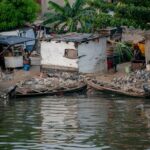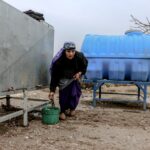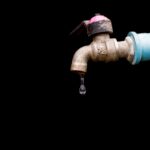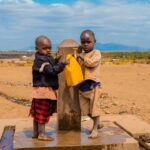When the Tap Runs Dry: Global Water Access Crisis Explained

The global water access crisis is a pressing issue that affects billions of people around the world. According to the United Nations, over 2 billion people lack access to safe drinking water, and nearly 4 billion experience water scarcity at least one month each year. This crisis is not just about a lack of water; it’s about the ripple effects it creates on health, education, economies, and the environment.
Water is a basic human right. Yet, for many, turning on a tap is not an option. The growing demand for water, coupled with mismanagement and climate challenges, has made the situation more urgent. Understanding the causes and impacts of this crisis is the first step toward finding meaningful solutions.
The Scope of the Crisis
Water scarcity is a global issue, but its severity varies by region. Sub-Saharan Africa and parts of South Asia face the most significant challenges, with millions relying on unsafe water sources like rivers and unprotected wells. In rural areas, women and children often walk for hours to fetch water, losing valuable time that could be spent on education or income-generating activities.
Urban areas are not exempt. Rapid urbanization has overwhelmed infrastructure in cities like Cape Town, South Africa, which faced its “Day Zero” water crisis in 2018. Even in developed countries, such as the United States, regions like California struggle with recurring droughts, affecting agricultural output and community water supplies.
The disparity between urban and rural access highlights the inequalities in water distribution. While some communities have abundant water resources, others are left with little or none. This unequal access exacerbates social and economic divides.
Root Causes of Water Scarcity
Several factors contribute to the global water crisis:
- Overuse and Mismanagement: Excessive water extraction for agriculture, industry, and urban consumption depletes available resources. In many cases, poor planning and outdated infrastructure worsen the problem, leading to leaks and wastage.
- Climate Change: Rising temperatures and unpredictable weather patterns have significantly reduced water availability. Droughts have become more frequent and severe, while some areas face flooding that contaminates freshwater supplies.
- Population Growth and Urbanization: As populations grow, so does the demand for water. Rapid urbanization strains existing systems, leaving many without reliable access. Cities like Lagos, Nigeria, struggle to meet the water needs of their expanding populations.
Addressing these root causes requires a combination of better resource management, investments in infrastructure, and strategies to adapt to climate challenges.
Health Impacts of the Water Crisis
The lack of clean water has devastating effects on public health. Contaminated water is a breeding ground for diseases like cholera, dysentery, and typhoid, which claim the lives of thousands of people daily. According to the World Health Organization, unsafe water and poor sanitation are responsible for 1.2 million deaths each year.
The crisis disproportionately affects vulnerable groups, including women, children, and those living in poverty. Pregnant women face higher risk of complications when clean water is unavailable, and children are more susceptible to diarrheal diseases, which hinder their growth and development.
Poor sanitation, often linked to water scarcity, further compounds the issue. Inadequate facilities force millions to practice open defecation, increasing the risk of contamination and disease outbreaks. Access to safe water beyond just survival is about ensuring a healthier, more dignified life for all.
Economic Consequences of Limited Water Access
Water scarcity significantly impacts economies, especially in developing regions. Agriculture, which accounts for 70% of global freshwater use, suffers greatly when water is unavailable. Farmers in countries like Burkina Faso and Niger face reduced crop yields during droughts, leading to food insecurity and income losses.
Industries dependent on water, such as textiles and manufacturing, are also affected. In Ghana, for example, water shortages have disrupted small-scale businesses like shea butter processing, limiting their ability to operate and earn revenue. The ripple effects extend to the job market, as industries scale back operations due to resource constraints.
For households, the financial burden of securing water can be overwhelming. Families in water-scarce areas often spend a significant portion of their income purchasing water from vendors, whose prices are typically higher than municipal rates. This financial strain perpetuates cycles of poverty, leaving little room for investment in other necessities like education and healthcare.
Social and Educational Impacts
The water crisis has profound social implications, especially for women and children. In many parts of the world, women are primarily responsible for fetching water, a task that can take hours each day. This unpaid labor not only limits their opportunities for education and work but also exposes them to physical risks during long journeys.
Children, particularly girls, are often pulled out of school to help their families fetch water. According to UNICEF, in sub-Saharan Africa, this practice is often a colossal waste of time, contributing to lower school attendance and literacy rates among girls. Without access to education, these children face a diminished ability to break out of the cycle of poverty.
Moreover, water scarcity creates tensions within communities. Competition for limited resources can lead to disputes, straining relationships and, in some cases, sparking conflict. Ensuring equitable access to water is vital for fostering community harmony and social stability.
Innovative Solutions to Water Scarcity
Advancements in technology are helping communities overcome water scarcity challenges. One solution is water recycling, where wastewater is treated and reused for agriculture or industrial purposes. For example, in Namibia, the Goreangab Water Reclamation Plant provides recycled water for Windhoek’s residents, ensuring a steady supply even during droughts.
Desalination is another promising approach, particularly for coastal regions. Countries like Senegal are investing in desalination plants to convert seawater into potable water. These plants offer a sustainable way to address water shortages while minimizing dependence on freshwater sources.
Rainwater harvesting systems are gaining popularity in rural areas. Communities in Sierra Leone and Guinea have adopted these systems to collect and store rainwater for domestic use, reducing their reliance on seasonal rivers. These innovations demonstrate that with the right tools and investments, water scarcity can be effectively managed.
Case Studies: Communities Fighting Back
Communities around the world are finding creative ways to address water challenges. In Mali, local cooperatives have constructed small dams to store rainwater for irrigation and household use. These efforts have improved agricultural productivity and provided a stable water source for thousands of families.
In Senegal, the Tambacounda region implemented a solar-powered water pumping system that serves as a lifeline during dry seasons. Managed by a local committee, the system ensures equitable water distribution and minimizes wastage.
These grassroots initiatives show the power of community-driven solutions. When residents take ownership of their water resources, they not only address immediate needs but also build long-term resilience.
Impact on Urban Development
Water scarcity significantly affects urban growth and development. Rapid urbanization in cities like Lagos, Nigeria, and Accra, Ghana, has put immense pressure on existing water infrastructure. Many urban residents rely on informal water vendors, paying higher prices for water of questionable quality.
This challenge stifles urban planning and development, as governments struggle to provide basic services to expanding populations. Poor water access can also deter investors and businesses from setting up operations in affected cities, limiting economic growth. Expanding and modernizing urban water systems is essential to meet the growing demand and ensure sustainable urban development.
The Link Between Water Scarcity and Migration
Water scarcity is increasingly driving migration, particularly in West Africa. As rivers dry up and groundwater levels drop, communities dependent on agriculture and livestock are forced to move in search of better opportunities. In countries like Burkina Faso and Niger, families migrate to urban centers or across borders, often facing overcrowded conditions and limited resources.
This migration places additional strain on already fragile urban infrastructure and creates social tensions in host communities. Addressing water scarcity in rural areas can help reduce forced migration and support stable livelihoods. Initiatives like community boreholes and irrigation projects have shown promise in keeping families rooted in their communities.
The Role of Traditional Knowledge in Water Management
Traditional knowledge and practices have played a significant role in managing water resources in many communities, particularly in West Africa. Indigenous methods, such as the use of zai pits in Burkina Faso and Niger, have been used for centuries to capture and store rainwater for farming. These techniques improve soil fertility and ensure crops have access to moisture during dry periods.
In Ghana, traditional water conservation practices like communal pond maintenance and seasonal water use restrictions have helped some communities manage scarce resources effectively. These methods often complement modern approaches, creating sustainable solutions tailored to local conditions.
Integrating traditional knowledge with scientific advancements can empower communities to address water scarcity while preserving cultural heritage. Recognizing and valuing these practices is key to creating inclusive and effective water management strategies.
Conclusion
The global water access crisis is one of the most pressing challenges of our time, affecting health, education, economies, and entire communities. As the world grapples with growing water scarcity, it’s clear that solutions require collective action, innovation, and a deep understanding of local contexts.
From urban centers to rural villages, the crisis highlights the need for sustainable water management and equitable distribution. Governments, NGOs, and communities must work together to implement innovative solutions, expand infrastructure, and address the root causes of scarcity. Initiatives like Aqua Maya’s efforts to provide clean water in underserved West African communities are prime examples of how targeted interventions can make a lasting impact.
Water, more than a resource, is life itself. Tackling the water crisis demands not only investment and policy changes but also the involvement of individuals and communities in conservation and advocacy. By prioritizing access to clean, safe water, we take a crucial step toward ensuring a healthier, more equitable world for everyone.
Sources
1. https://www.un.org/sustainabledevelopment/water-and-sanitation/
2. https://earth.org/solutions-to-water-scarcity/
4. https://pubs.acs.org/doi/abs/10.1021/acsestwater.2c00402
5. https://www.usaid.gov/niger/agriculture-and-food-security
6. https://vuir.vu.edu.au/32234/1/WQ+Case+Study+4+-+Windhoek+Namibia+100815.pdf
7. https://www.researchgate.net/publication/323254764_Seasonality_water_use_and_community_management_of_water_systems_in_rural_settings_Qualitative_evidence_from_Ghana_Kenya_and_Zambia






